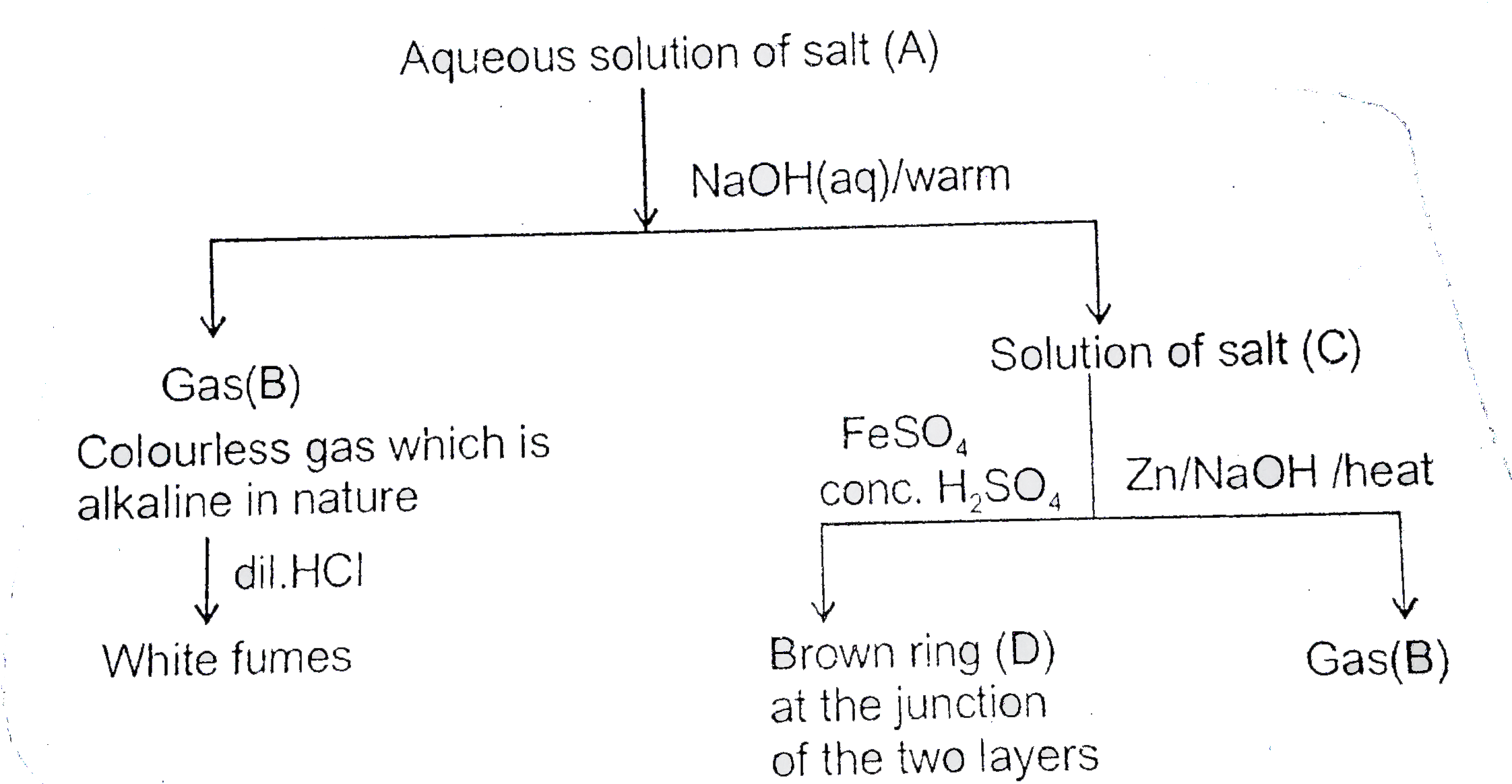Basic radical which gives Nessler's reagent test in which brown precipitate or brown colouration obtained
To solve the question regarding the basic radical that gives a positive Nessler's reagent test resulting in a brown precipitate or brown coloration, we can follow these steps:
1. Understanding Nessler's Reagent:
- Nessler's reagent is a solution of mercuric iodide (HgI₂) in potassium iodide (KI) and is used to detect the presence of ammonia (NH₃) in a solution.
2. Identifying the Basic Radical:
- The basic radical we are looking for is ammonia (NH₃). It is a common basic radical that can be tested using Nessler's reagent.
3. Reaction of Ammonia with Nessler's Reagent:
- When ammonia is added to Nessler's reagent, a complex is formed. The reaction can be represented as follows:
NH3+Nessler's Reagent→Brown Precipitate
- The chemical equation involves the formation of a brown complex, which is a result of the interaction between ammonia and the mercuric ions in the reagent.
4. Formation of Brown Precipitate:
- The brown precipitate formed is due to the formation of a complex that contains mercury and ammonia. The precipitate is often referred to as the iodide of melon's base.
- The overall reaction can be summarized as:
2HgI2−4+4OH−+NH3→Brown Precipitate+7I−+3H2O
5. Conclusion:
- Therefore, the basic radical that gives a positive Nessler's reagent test, resulting in a brown precipitate or brown coloration, is Ammonia (NH₃).
- Nessler's reagent is a solution of mercuric iodide (HgI₂) in potassium iodide (KI) and is used to detect the presence of ammonia (NH₃) in a solution.
- The basic radical we are looking for is ammonia (NH₃). It is a common basic radical that can be tested using Nessler's reagent.
- When ammonia is added to Nessler's reagent, a complex is formed. The reaction can be represented as follows:
NH3+Nessler's Reagent→Brown Precipitate
- The chemical equation involves the formation of a brown complex, which is a result of the interaction between ammonia and the mercuric ions in the reagent.
- The brown precipitate formed is due to the formation of a complex that contains mercury and ammonia. The precipitate is often referred to as the iodide of melon's base.
- The overall reaction can be summarized as:
2HgI2−4+4OH−+NH3→Brown Precipitate+7I−+3H2O
- Therefore, the basic radical that gives a positive Nessler's reagent test, resulting in a brown precipitate or brown coloration, is Ammonia (NH₃).
Topper's Solved these Questions
- QUALITATIVE ANALYSIS PART 1Book:RESONANCE ENGLISHChapter:QUALITATIVE ANALYSIS PART 1Exercise:EXERCISE 1 PART 1 QUALITATIVE ANALYSIS
Explore 13 Videos
- QUALITATIVE ANALYSIS PART 1Book:RESONANCE ENGLISHChapter:QUALITATIVE ANALYSIS PART 1Exercise:EXERCISE 1 PART 2 QUALITATIVE ANALYSIS
Explore 22 Videos
- QUALITATIVE ANALYSIS PART 1Book:RESONANCE ENGLISHChapter:QUALITATIVE ANALYSIS PART 1Exercise:A.L.P
Explore 39 Videos
- QUALITATIVE ANALYSIS (ANION)Book:RESONANCE ENGLISHChapter:QUALITATIVE ANALYSIS (ANION)Exercise:Matching List Type
Explore 1 Video
- RANK BOOSTERBook:RESONANCE ENGLISHChapter:RANK BOOSTERExercise:All Questions
Explore 1896 Videos
Similar Questions
This provides brown colour to algae
View SolutionWhich no mixing gives deep brown colour :
View SolutionChocolate brown precipitate is formed with:
View Solution
Salt(A) on heating gives a colourless neutral gas which supports combustion.
From the aforesaid, flow diagram, answer the following questions.
The basic radical of salt (A) and gas B both gives brown precipitate with Nessler's reagent.The composition of the brown precipitate is:
View Solutionalkali metal (A) on flame test gives a crimson red colour to the
Bunsen flame. (A) on heating in air gives compound (B), and (B)
further on hydrolysis gives (C ) and gas (D). Gas (D) with Nessler's reagent gives a brown precipitate Identify (A),
(B), (C ) and (D).
View SolutionIn which of the following reactions a brown coloured gas is evolved ?
View SolutionBAT is brown in colour due to
View SolutionWhich pigment is responsible for brown colour of brown algae?
View SolutionName the pigment that gives brown colour to brown algae.
View SolutionWhich of the following gases have brown colour ?
View Solution

